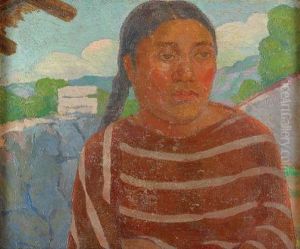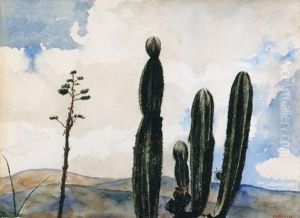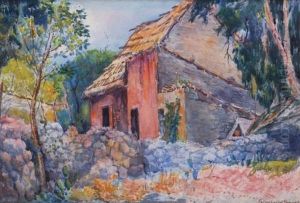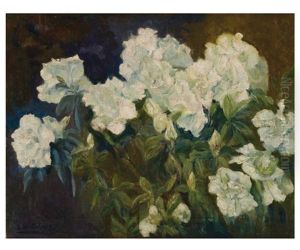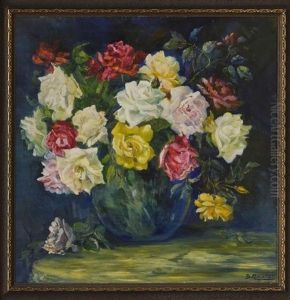Gonzalo Arguelles Bringas Paintings
Gonzalo Arguelles Bringas was a notable Mexican painter and illustrator born on July 4, 1877, in Mexico City. His artistic talent emerged early in his life, and he began his art education at the Academia de San Carlos, the premier art institution in Mexico at the time. There, he studied under distinguished teachers such as Santiago Rebull and José Salomé Pina, who were instrumental in shaping his early art style.
Arguelles Bringas' work was primarily rooted in academicism, which was characteristic of the late 19th and early 20th centuries. However, his oeuvre also showed an inclination towards the modernist tendencies that were beginning to influence art during his time. He was adept in various mediums, including painting, drawing, and illustration, which allowed him to express his creative vision in multiple forms.
He became particularly known for his contributions as an illustrator for magazines and books, which were popular during the Porfirio Díaz era in Mexico. His illustrations often captured social scenes, landscapes, and historical events, thereby contributing to the visual documentation of Mexican society in the late 19th and early 20th centuries.
Throughout his career, Arguelles Bringas was active in the Mexican art community. His works were featured in numerous exhibitions, and he was a contemporary of other great Mexican artists who would later shape the direction of Mexican art, such as Diego Rivera and José Clemente Orozco. Despite his traditional beginnings, Arguelles Bringas' work transitioned during the Mexican Revolution, reflecting the social and political upheavals of the time.
Gonzalo Arguelles Bringas passed away on November 24, 1942, in Mexico City. Though he is not as widely known as some of his contemporaries, his artistic legacy remains part of Mexico's rich cultural heritage. He left behind a body of work that offers insight into the transitional period of Mexican art, bridging the gap between academic traditions and the burgeoning modernist movement that would eventually lead to the Mexican Mural Renaissance.
